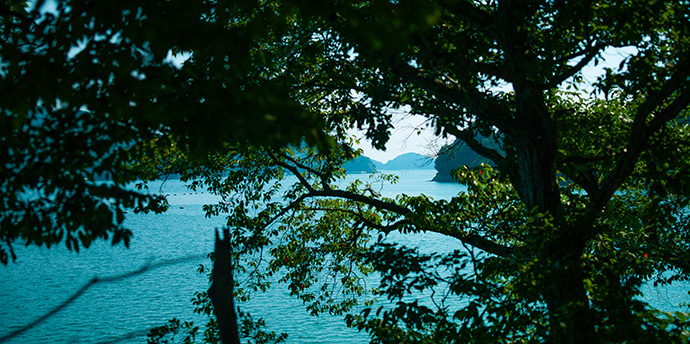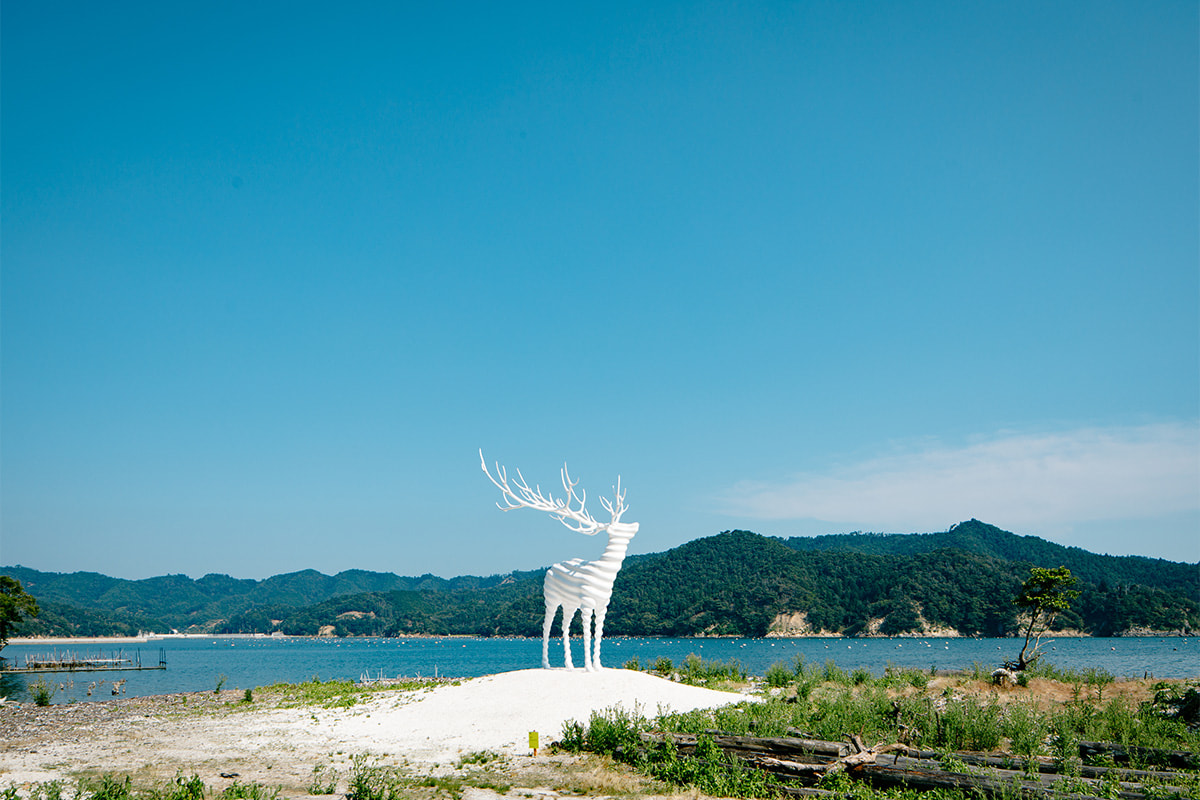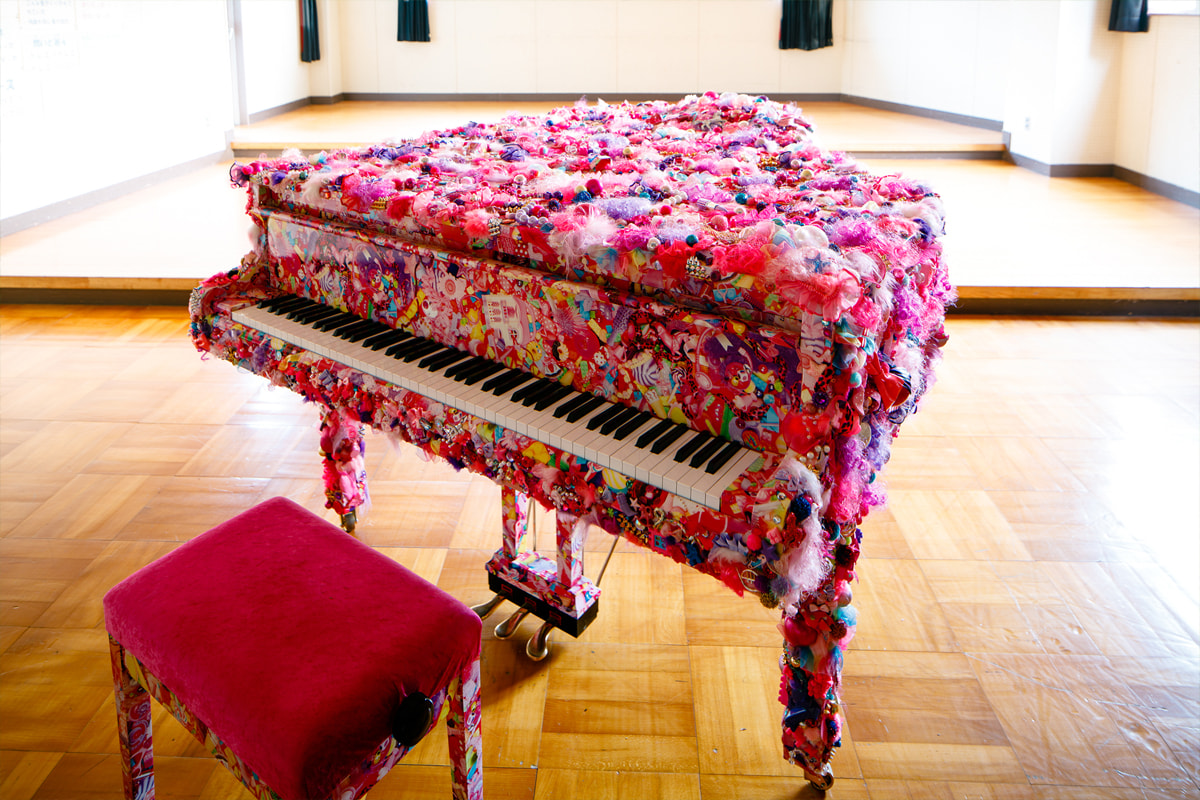REBORN ART TRAVEL
Trip to sense the historic Texture of Life.
A Stray Deer Whose Expression Changes According to the Time
White Deer (Oshika)
名和晃平 / KOHEI NAWA
Since ancient times, deer have been regarded as divine messengers or divine creatures in such beliefs as animism and Shinto. With their numbers increasing in Japan in recent years, the deer that sometimes appear in villages are called “stray deer.” White Deer (Oshika) was created based on the scanned 3D data of a (stuffed) stray deer that I ordered after it popped up online. Standing on the beach of Ogihama on the Oshika Peninsula, it looks up at the distant sky and turns toward the island of Inujima in the Seto Inland Sea, where its journey first began.(Kohei Nawa)
- OGIHAMA
- MADE:2017
- OPEN
- PLACE:White shell beach
- PARKING ○

名和晃平 / KOHEI NAWA
Born in 1975. Artist, Director of SANDWICH Inc., Professor at Kyoto University of Art and Design. Currently based in Kyoto. He graduated from Kyoto City University of Arts in 1998 with a Ph.D. in Fine Art Sculpture in 2003. He establishes “SANDWICH”, a creative platform for production in 2009. He explores the potentiality of sculpture, working with beads, polyurethane foam, silicone oil, and a wide range of other technologies and materials, through his original concept “PixCell”. Nawa's recent projects extend this exploration to architecture and performance, to create both space and art.
OFFICIAL WEB SITE

OGINOHAMA AREA
A white shell beach is the site of Kohei Nawa’s work White Deer (Oshika) and the Reborn-Art Dining event. Find the beach after walking past the oyster beds and going down a narrow lane. Oshika Village, along the prefectural road where the Hama-Saisai eatery is also located, is a key area in the campaign to generate new economic opportunities and various positive cycles of growth with the local populace.
-

White Deer (Oshika)
KOHEI NAWA
A Stray Deer Whose Expression Changes According to the Time
White Deer (Oshika)
KOHEI NAWA
Since ancient times, deer have been regarded as divine messengers or divine creatures in such beliefs as animism and Shinto. With their numbers increasing in Japan in recent years, the deer that sometimes appear in villages are called “stray deer”.(Kohei Nawa)
-

White Road
SHIMABUKU
Facing the Sky, Ocean, and Kinkasan at the Edge of the Peninsula
White Road
SHIMABUKU
The white road extends through the woods, up toward the sky, and to the sea. Approaching Kinkasan, at the point where waves are visible, can’t you see the birds frolicking there? That is the place to rediscover nature.(SHIMABUKU)
-

room KINKAZAN
GOZO YOSHIMASU
The Room That a Poet Keeps Visiting
room KINKAZAN
GOZO YOSHIMASU
A room on the second floor of Hotel New Sakai is an exhibition space where Gozo Yoshimasu always stayed when he came to Ayukawa to prepare for his exhibition. Here you can see these newborn poems, which he wrote while gazing out at Kinkasan, and the place where Yoshimasu created his work. (GOZO YOSHIMASU)
-

Microcosmos -Melody-
MASUDA SEBASTIAN
A Resplendent Piano Newly Installed in Front of the Station
Microcosmos -Melody-
MASUDA SEBASTIAN
Surrounded as we are by things we cannot control, I want this work to bring color to the hearts of everyone. I hope the piano serves as a tool for different generations to communicate and allows everyone to make colorful melodies together.(Sebastian Masuda)
It cannot be viewed due to the weather or local conditions. Please refer to SNS for details.


